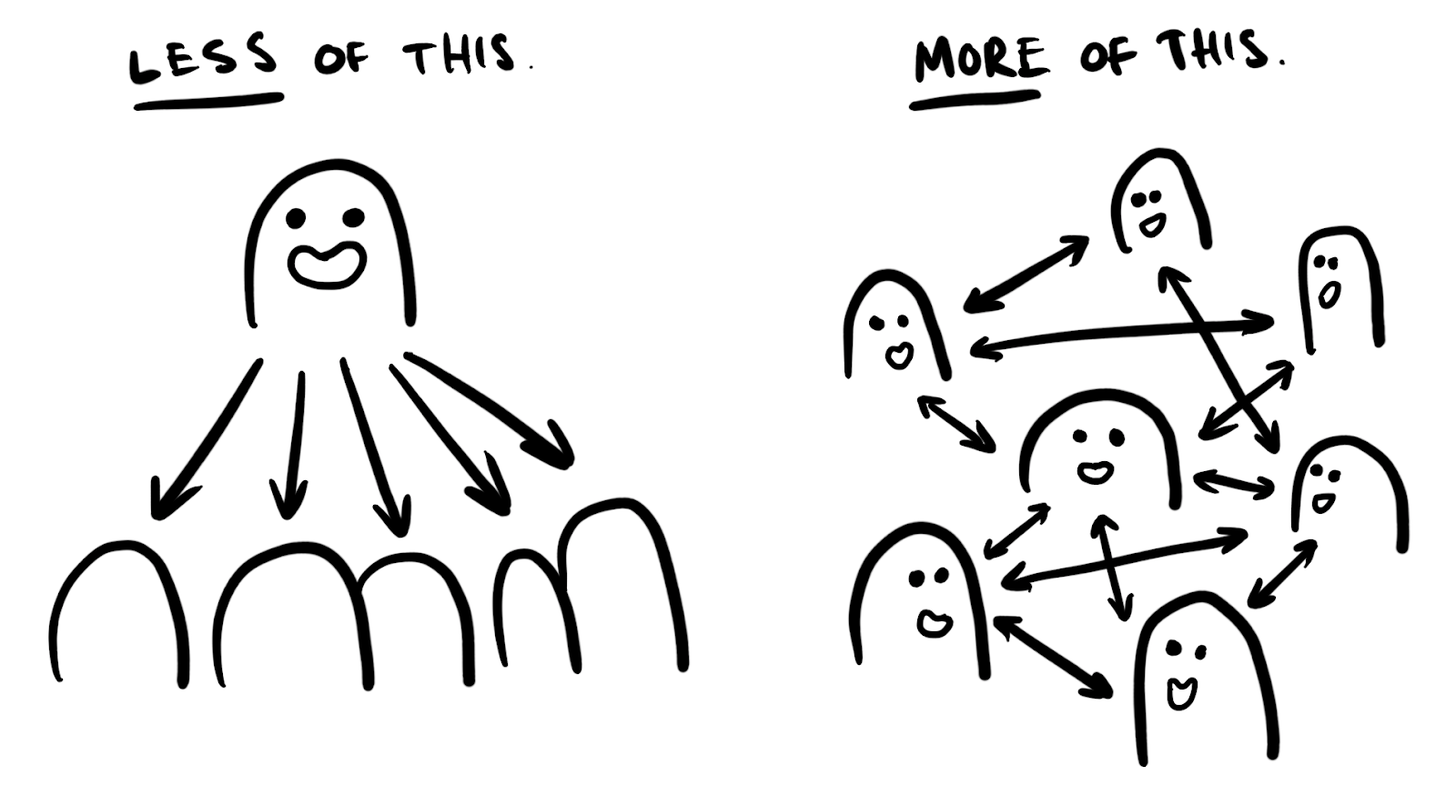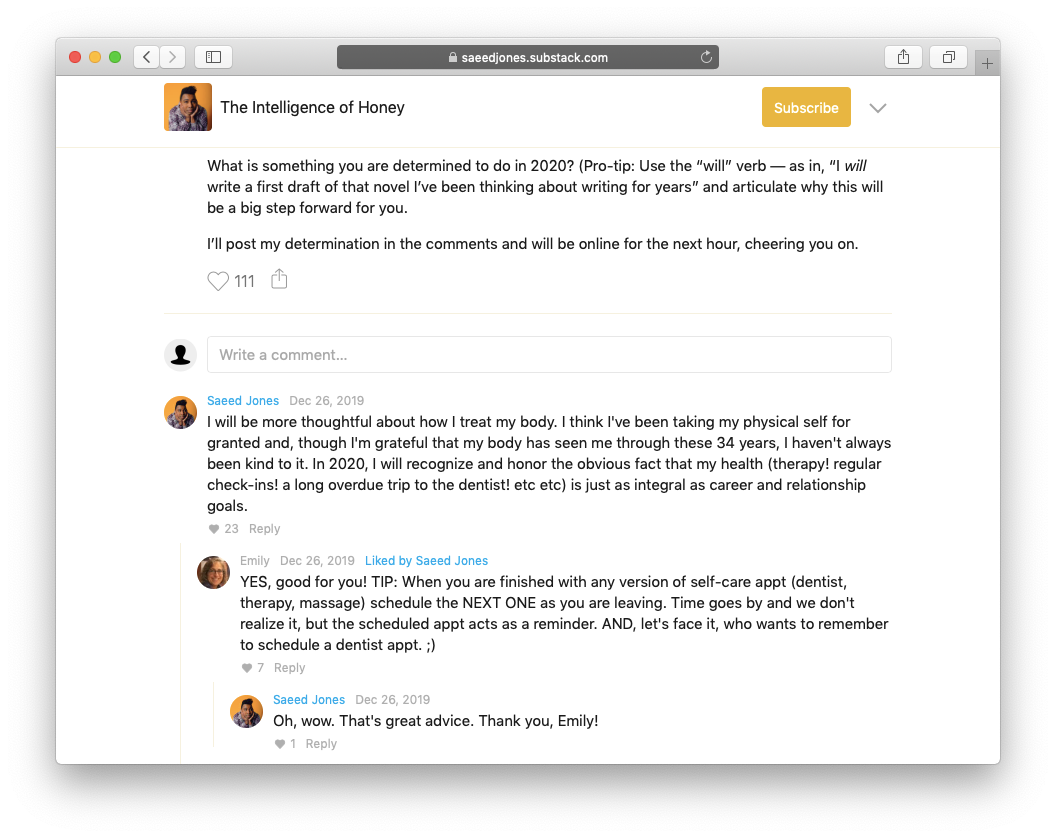Writing for an audience is about more than publishing posts; it’s about bringing people together over a shared topic or perspective on the world.
Community-building often gets us excited to jump into the what, how, where, and when of organizing. Publish a post! Start a Slack group! Host a conference! But these tactics are more effective when you first have a clear sense of who you’re bringing together and why.

Pinpoint your people
If you’re a writer, it’s not always easy to figure out who’s following your work. For every reader who shares your writing or reaches out to you, there are countless others with whom you may never interact. Write down your answers to these questions:
- Who do you want to bring together?
- Why do they want to come together?
Bailey explained that it’s especially good when you can describe your audience in terms of behavior and motivations rather than demographics; the latter might even be a legacy from advertising, which tends to put us into categories (think “35-44 year old urban working mom”).
By contrast, describing your audience in terms of a shared perspective creates the space for something that anyone can be a part of. Substack fellow Emily Atkin, for example, describes her publication HEATED as “a newsletter for people who are pissed off about the climate crisis”. That could mean a diverse group of people who overlap not in age or categories, but in a passion point. As Bailey put it, “Being at the surprising center of a Venn diagram can feel really impactful and meaningful”.
One of the natural advantages of having a subscriber audience is that it’s easier to get to know your fans. Try to write a sentence that brings these two parts together (this also makes for a great one-sentence description for your Substack!):
This community brings together [WHO] so we can [WHY].
For example, Bailey shared the story of YouTubers John and Hank Green, whose community of Nerdfighters brings together “nerds and the ‘otherwise out of sync’” (who) to “increase awesome and decrease world suck” (why).
If you’re feeling stuck on the “why”, here are a few more guiding questions about people who might be in your community:
- What do they need more of?
- What change do they desire?
- What’s a problem that only they can solve together?
Come up with a shared activity
Now that you’ve identified who your community is and why they want to come together, you can start to tackle “what” you will do together.
Think of a shared activity that helps your community achieve their “why”. In other words: what do people get together to do?
In her experience, Bailey has found that people tend to get together in order to do something that is better in a group, like teach each other, support each other, and meet up locally.
Your shared activity should have the following traits:
- Purposeful: It brings your community’s “why” to life
- Participatory: It gives others the chance to contribute (ideally, you shouldn’t do all the work!)
- Repeatable: It takes place regularly, which builds a habit or ritual (Bailey noted that organizing a community is like running a cafe: you need to keep the doors open for your patrons.)
Pro tip: Substack discussion threads are great for this!

The Substack fellows talked about using discussion threads as a way of creating shared activities in online spaces. (If you’re interested in learning more about threads, check out Terrell Johnson’s post about how he uses threads in The Half Marathonercommunity.)
Substack fellow Sarah Bessey regularly uses discussion threads to bring her community together. For example, Sarah’s Christmas Gift Guide thread gives her subscribers a chance to teach each other, while her Wisdom from the Field series — where she chooses a user-submitted question for others to answer — gives them a chance to support each other.
After the workshop, several fellows experimented with discussion threads. For instance, Saeed Jones asked his readers to share their New Year’s Determination for 2020 (pictured above), while Lindsay Gibbs asked her readers about the most important women’s sports moments of the decade – and then she published the 20 most important moments in her last two posts of the year.
While it’s not always feasible for an online community to meet up locally, you also can use threads to host regular “get togethers” at a certain time, where subscribers can hang out and talk about their week. Or you can host conversations about something you’re watching together, such as a political debate, a sporting event, or an awards show. Substack fellow Amee Vanderpool, for example, who writes about politics for Shero, hosted a discussion thread to talk about the US presidential debates.
Help your readers get together
Your writing is a beacon for like-minded readers, even if you don’t know who they all are yet! Giving your readers the chance to get to know you, as well as their fellow subscribers, can be a powerful experience. Once you know who your audience is, the what’s and how’s of building your community will easily follow.
